What is a Nutrient Film Technique (NFT) system?
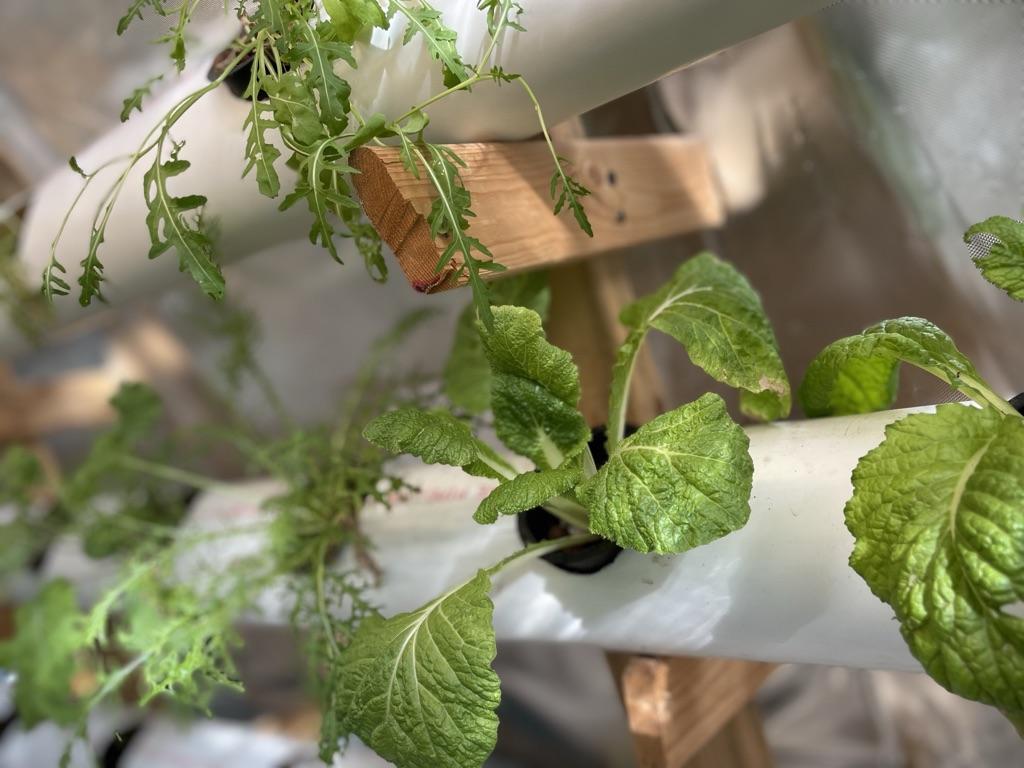
Nutrient Film Technique (NFT) is a hydroponic growing system that has been adapted for use in aquaponics gardening. Aquaponics is a method of growing plants and fish together in a closed-loop system, where the waste from the fish is used to fertilize the plants, and the plants filter the water for the fish.
How do NFT systems work?
In an NFT system, plants are grown in a shallow, sloping trough that is flooded with nutrient-rich water. The water flows continuously through the trough, creating a thin film of water that coats the roots of the plants. The roots are exposed to the air, which allows them to absorb oxygen, and they take up the nutrients they need directly from the water.
One of the advantages of the NFT system is that it is a very efficient use of water. Because the water is continuously recycled through the system, there is very little waste. In addition, the shallow depth of the troughs means that the plants are exposed to a lot of air, which helps to oxygenate the water.
NFT systems are particularly well-suited for growing plants that have shallow root systems, such as lettuce, spinach, and herbs. They are also very popular for growing plants that are sensitive to waterlogged roots, such as strawberries and tomatoes.
NFT systems in Aquaponics
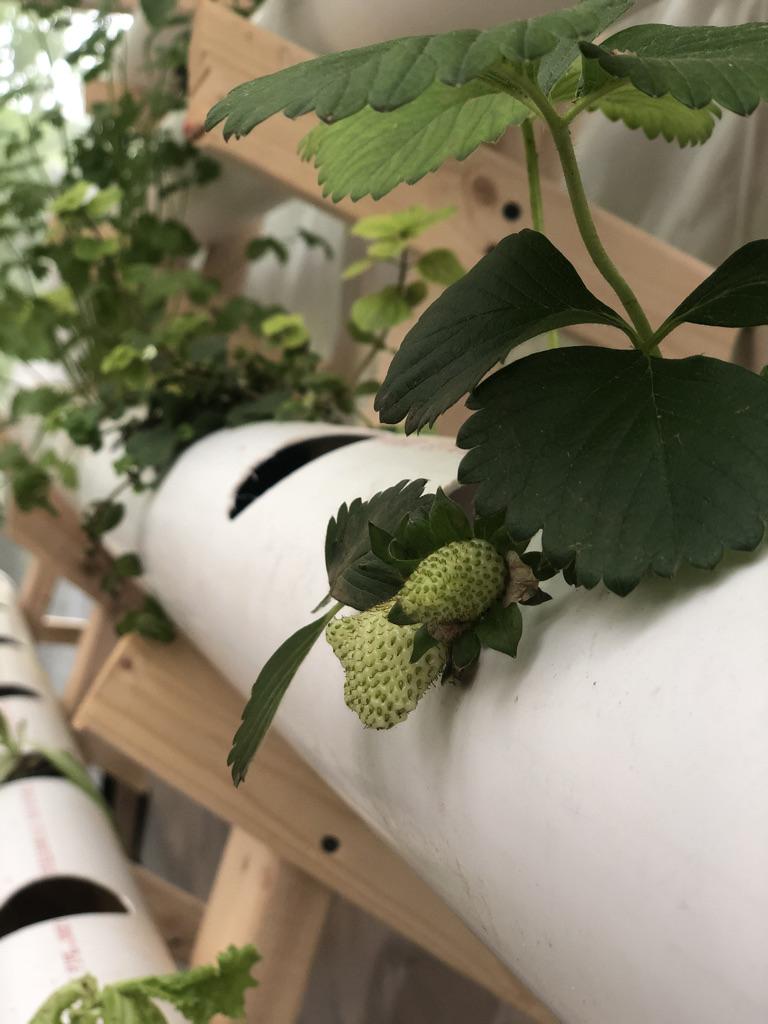
In an aquaponics NFT system, the nutrient-rich water is created by the waste produced by the fish. The fish are raised in a separate tank, and their waste is filtered and pumped into the NFT troughs. As the water flows through the troughs, the plants absorb the nutrients they need, and the water is filtered and purified by the plants. The clean water is then returned to the fish tank, completing the closed-loop system.
NFT configurations in Aquaponics
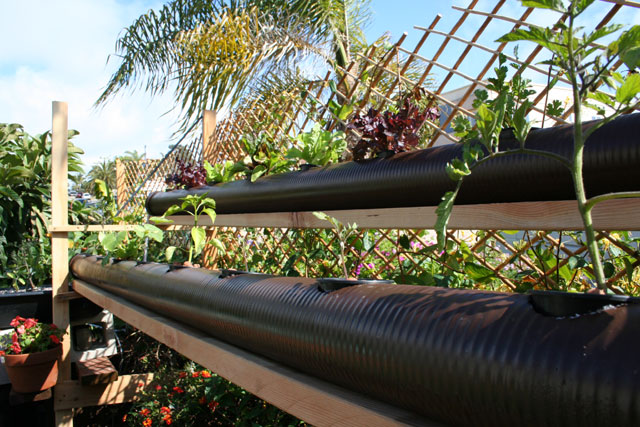
Aquaponics NFT systems can be set up in a variety of configurations, depending on the space available and the types of plants and fish being grown. They can be used in small-scale backyard setups, as well as in larger commercial operations.
NFT aquaponics systems can be set up in a variety of configurations, depending on the space available, the types of plants and fish being grown, and the specific goals of the gardener. Here are some of the different types of configurations used in NFT aquaponics gardens:
- Vertical NFT systems: These systems are designed to take up less floor space by growing plants vertically, using stacks of NFT troughs. The water flows down through the troughs and back up to the fish tank, providing the plants with the nutrients they need while conserving space.
- Horizontal NFT systems: These systems use long, flat NFT troughs that are placed side-by-side to create a larger growing area. This configuration is well-suited for growing crops with shallow root systems, such as lettuce, and can be used in both small and large-scale aquaponics gardens.
- Modular NFT systems: These systems use pre-built modular units that can be easily assembled and customized to fit the specific needs of the gardener. This type of configuration is ideal for those who want to experiment with different plant and fish combinations, or who have limited space to work with.
- Hybrid NFT systems: These systems combine NFT with other aquaponics methods, such as deep water culture (DWC) or media bed systems. This allows the gardener to take advantage of the unique benefits of each system, while minimizing their drawbacks.
- Indoor NFT systems: These systems are designed for indoor use, using artificial lighting to provide the plants with the necessary light to grow. This type of configuration is ideal for year-round growing and for gardeners who live in areas with harsh weather conditions.
- Commercial NFT systems: These are large-scale NFT systems that are designed for commercial production of crops. They can be customized to fit the specific needs of the farmer, and can be used to grow a wide range of crops, including vegetables, herbs, and fruits.
Each configuration has its own benefits and drawbacks, and the gardener should carefully consider their specific needs and constraints before choosing a configuration. With the right setup, NFT aquaponics systems can provide a highly efficient and productive way to grow plants and fish together in a closed-loop system.
Pros and Cons to NFT systems:
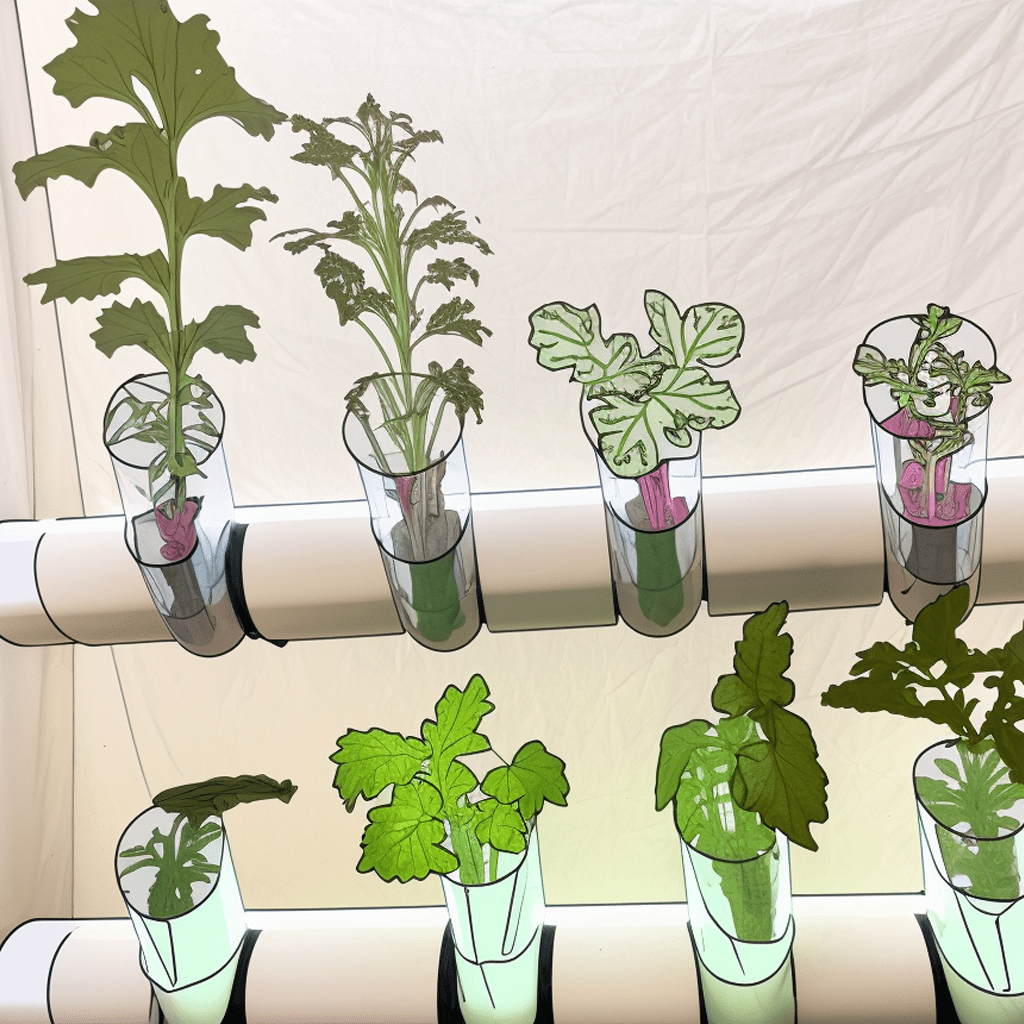
While there are many benefits to this type of system, there are also some drawbacks that gardeners should be aware of. Here are some of the pros and cons of NFT aquaponic systems:
Pros to NFT systems:
- Efficient use of space: NFT systems are designed to take up minimal space while still providing a large growing area for plants. This makes them ideal for indoor or urban gardening where space is limited.
- Water conservation: NFT systems use water very efficiently, recycling the same water over and over again. This means that they require much less water than traditional soil-based gardening.
- High productivity: Because plants in NFT systems receive a steady stream of nutrients and water, they tend to grow very quickly and produce high yields.
- Easy to manage: NFT systems are relatively easy to set up and manage, making them a great option for beginning gardeners or those with limited time to devote to their garden.
Cons to NFT systems:
- Vulnerability to power outages: NFT systems require a constant flow of water to keep the plants and fish healthy. This means that they are vulnerable to power outages, which can quickly cause problems in the system.
- Prone to clogging: NFT systems rely on a thin film of water to provide nutrients to the plants. If the system becomes clogged, this film can be disrupted, and the plants may not receive the nutrients they need.
- Limited plant types: NFT systems are best suited for plants with shallow root systems, such as lettuce, herbs, and strawberries. This can limit the variety of crops that can be grown in the system.
- Fish compatibility: Not all fish species are suitable for use in NFT aquaponic systems. Some fish may be too large or too aggressive for the small space, while others may not produce enough waste to support plant growth.
- Initial cost: NFT aquaponic systems can be expensive to set up, particularly if you are starting from scratch. However, the long-term savings in water and nutrient use can offset this initial investment over time.
Overall, the NFT system is an effective and efficient way to grow plants in an aquaponics system. Its shallow troughs and continuous flow of nutrient-rich water create an ideal growing environment for many types of plants, while also minimizing water waste and maintaining water quality for the fish.
FAQs about NFT systems:
How do you prevent clogging in an NFT system?
Regularly cleaning and maintaining the system can help prevent clogging. Some gardeners also use a pre-filter to remove larger particles before they enter the system.
Can NFT systems be used to grow plants other than vegetables and herbs?
Yes, NFT systems can be used to grow a variety of crops, including flowers and fruits like strawberries.
What types of fish are best suited for NFT aquaponic systems?
Smaller fish species like tilapia, catfish, and trout are generally well-suited for NFT systems.
How do you prevent algae growth in an NFT system
A: Algae growth can be prevented by reducing the amount of light that enters the system and maintaining proper nutrient levels.
Can NFT systems be used for commercial-scale aquaponic farming
Yes, NFT systems can be used for commercial-scale aquaponic farming and are often used to grow crops like lettuce and herbs.
Is it possible to grow plants in an NFT system without fish
Yes, it is possible to use a nutrient solution instead of fish waste in an NFT system to provide nutrients to the plants.
Can NFT systems be used outdoors
Yes, NFT systems can be used outdoors, but they may be more susceptible to temperature fluctuations and weather conditions.
How often should you test the water quality in an NFT system
It is recommended to test the water quality in an NFT system weekly to ensure that nutrient levels and pH levels are within the proper range.
How do you control pH levels in an NFT system
pH levels can be controlled by adding acids or bases to the water, or by using pH buffering solutions.
Are NFT aquaponic systems more or less expensive than traditional soil-based gardening?
NFT aquaponic systems can be more expensive to set up initially, but can save money over time due to their efficient use of water and nutrients.


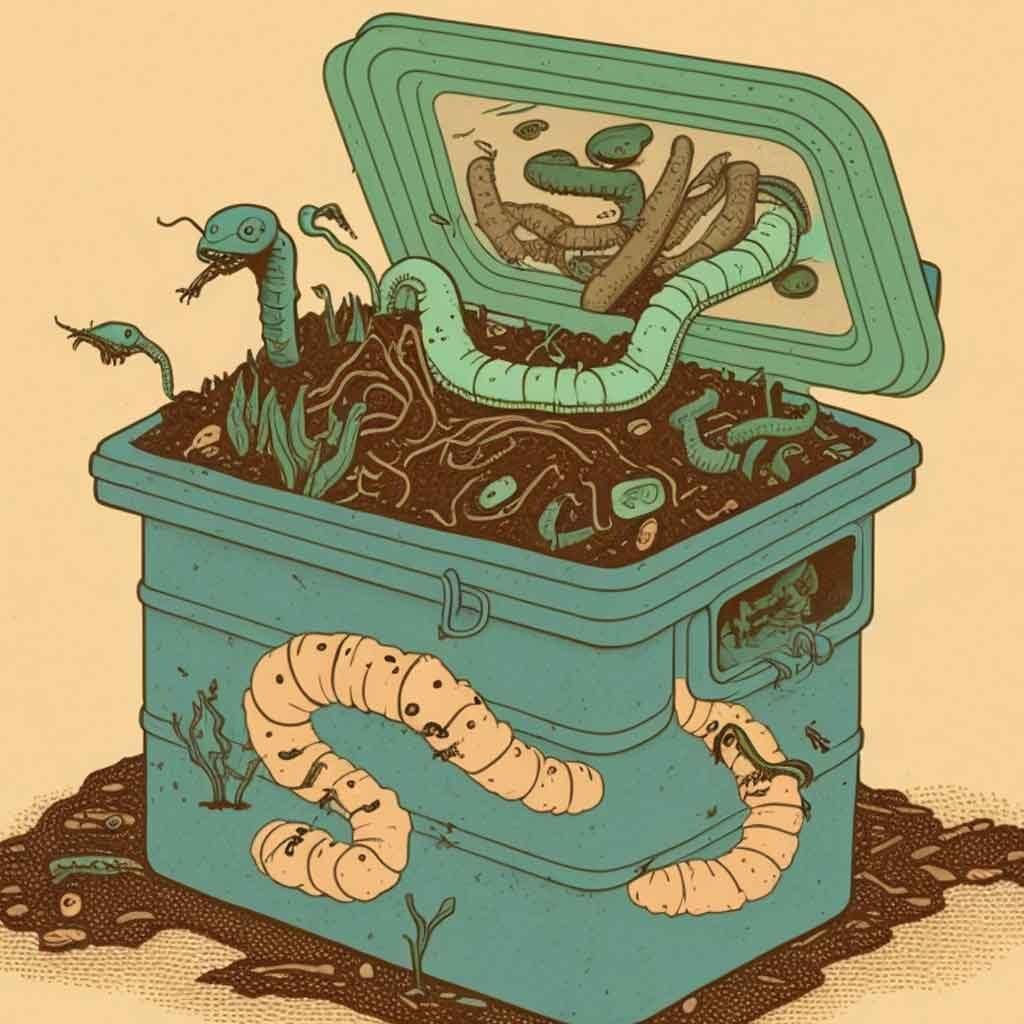

Leave a Reply